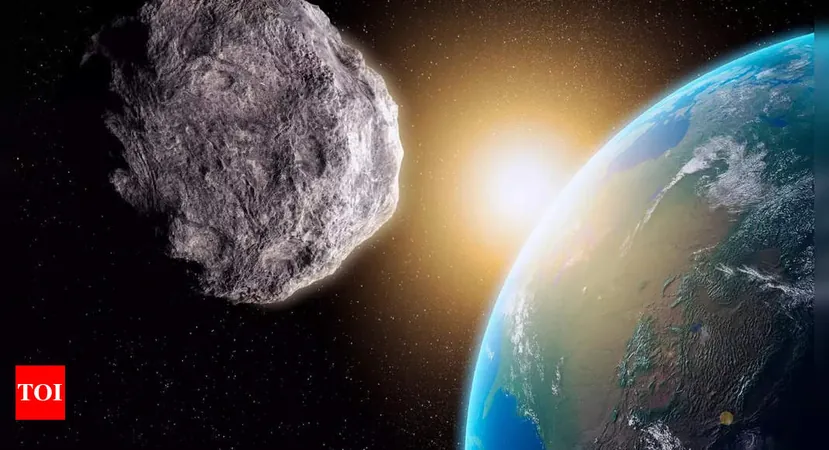
Asteroid 2025 BK to Zoom Past Earth—NASA Reveals Key Insights!
2025-01-22
Author: Mei
What You Should Know About Asteroid 2025 BK
Asteroid 2025 BK measures approximately 160 feet across, comparable to the size of a large commercial airplane. It is careening through space at an astonishing speed of 23,348 miles per hour. Thankfully, NASA confirms that there is no immediate danger regarding the asteroid’s trajectory, as it will safely pass by Earth at a staggering distance of 3,660,000 miles. For perspective, this is over 16 times further away than the Moon!
The closest approach is scheduled for 15:54 IST on January 25, 2025. While some might see this as alarmingly close, experts insist that the asteroid poses no threat of collision, reinforcing the importance of ongoing monitoring.
Why Asteroid Tracking is Crucial
Asteroids like 2025 BK offer valuable insights into the early solar system, as they are remnants from its formation. NASA emphasizes that while many asteroids drift harmlessly through space, some could eventually pose a risk to Earth. Tracking their movements is essential for assessing potential collision threats and for planning mitigative measures.
Asteroid tracking employs cutting-edge technology, including sophisticated radar systems and telescopes, alongside data gathered from impactful space missions like NASA’s OSIRIS-REx. These advanced tools not only help us understand the history of our solar system but also bolster our preparedness for any potential asteroid threats in the future.
The Essential Role of Planetary Defense
While 2025 BK isn't currently deemed a threat, its upcoming passage serves as a reminder of why planetary defense is so vital. This field studies near-Earth objects and strategizes methods to avert potential impacts, ensuring Earth's safety from catastrophic asteroid collisions.
NASA’s dedicated efforts reflect a broader commitment to planetary defense, and their successes bolster our confidence in the measures taken to guard our planet. As we get closer to January 2025, excitement will undoubtedly grow, but let’s remember the scientific diligence that keeps us informed and safe.
Stay tuned as we continue to provide updates on asteroid tracking efforts and other exciting developments in space exploration!



 Brasil (PT)
Brasil (PT)
 Canada (EN)
Canada (EN)
 Chile (ES)
Chile (ES)
 Česko (CS)
Česko (CS)
 대한민국 (KO)
대한민국 (KO)
 España (ES)
España (ES)
 France (FR)
France (FR)
 Hong Kong (EN)
Hong Kong (EN)
 Italia (IT)
Italia (IT)
 日本 (JA)
日本 (JA)
 Magyarország (HU)
Magyarország (HU)
 Norge (NO)
Norge (NO)
 Polska (PL)
Polska (PL)
 Schweiz (DE)
Schweiz (DE)
 Singapore (EN)
Singapore (EN)
 Sverige (SV)
Sverige (SV)
 Suomi (FI)
Suomi (FI)
 Türkiye (TR)
Türkiye (TR)